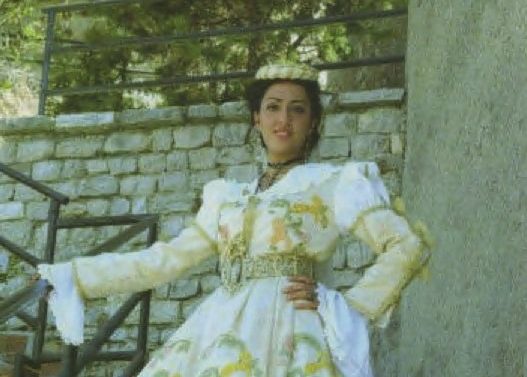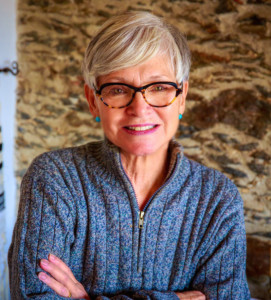Southern Italian Wedding Customs Based on Ancient Jewish Traditions
Thanks to the dogged efforts of Prof. Vincenzo Villella and others, historians now document that following the Expulsion of the  Jews from Spain in 1492 and their escape during Inquisition times to Sicily and Calabria, more than 40 percent of the local population of southern Italy was once Jewish.
Jews from Spain in 1492 and their escape during Inquisition times to Sicily and Calabria, more than 40 percent of the local population of southern Italy was once Jewish.
As these Jewish families ran from persecution and death, they worked hard to establish themselves in the tiny coastal and mountain villages in the “toe” and the “instep” of the Italian “boot.” Now hopefully safely settled in their new villages, these Jews continued to practice many of the customs and traditions that, over time, became a part of the greater southern Italian culture.
Sadly the long arm of the Inquisition eventually reached Sicily and Calabria and many Jews were either tortured and murdered or forced to accept Christian baptism. Those who survived were called “b’nei anusim,” a Hebrew phrase that means “descendants of the forced ones.” Many of these “anusim” families continued to practice ancient family traditions, often incorporating them into the existing Christian holidays and life cycle events.
Today southern Italian wedding traditions include Sephardic Jewish practices that were brought by the Jews of Spain who eventually settled in Sicily and Calabria. And although many locals are not aware of it, Sephardic traditions abound in both Jewish and Catholic wedding ceremonies.
Rabbi Joshua Maroof, an expert in Sephardic Jewish traditions, shares important differences between the Sephardic and Ashkenazi Jewish wedding, For me as a rabbi and Sephardic Jew who lives in Calabria I have had the opportunity to observe how many of these Jewish traditions have become a part of the Calabrian and Sicilian Catholic wedding ceremony as well.
- Prior to the actual ceremony it is a part of Ashkenazi tradition for the groom to conduct the “bedeken” ceremony, or the veiling of the bride. In the Sephardi tradition, as the bride comes forward, escorted by her parents, the bride’s father lifts the veil and presents his daughter to the groom, who then escorts her under the “chuppah,” the wedding canopy. During the Catholic ceremony it is not uncommon for the groom to walk halfway up the aisle to lift her veil and escort her forward. For the Jewish couple, the marriage takes place under the bridal canopy (“chuppah,” in Hebrew, “baldacchino” in Italian). For southern Italian Catholics who are aware of their Jewish roots, a large crocheted table cloth or bed spread is held over the couple as they exit the church. “Sotto la coperta,” or “under the covering,” the bride and groom receive a special family blessing.
- In both Jewish and Catholic Mediterranean cultures Sunday is considered the best day for the wedding ceremony. Interestingly both cultures count Sunday as the first day of the week.
- For both Jews and Catholics a ceremony occurs the day before the wedding where the bride greets her female relatives and friends. For this event the bride-to-be wears all of her best jewelry. After the guests have admired each necklace, bracelet and ring, the bride-to-be carefully takes off each piece of jewelry and gives it to her maid of honor for safe keeping. For both Jews and Catholics the ceremony emphasizes that jewelry and riches are less important than the plain gold wedding band that both cultures prefer.
- Unlike the Ashkenazi practice, the signing of the “ketubah,” the Jewish wedding document, is conducted under the chuppah at a special time during the wedding ceremony. In some Italian Catholic parishes the signing of the wedding document happens in front of the guests, at the end of the ceremony.
- Saying “Yes to the Dress,” for Sephardic brides often includes a white gown decorated with elaborate colorful embroidery (pictured here) that signifies the boundless joy of the wedding day. It is not unusual for Calabrian Catholic brides to continue this tradition, complete with the traditional “keza,” or gold braided headdress popularized originally by Sephardi brides in Spain.
- Just as the Sephardic bride and groom wear a crown of flowers on their heads, (called a “keza,” in southern Italian dialect, from the Hebrew word “keter”)) the crowning ceremony also is part of the Eastern Orthodox marriage rite where the married couple each dons a ring of flowers and/or a crown of gold braiding.
- During the Jewish ceremony the couple shares a sip of wine, often from a family Kiddush cup. We find the same ritual in the Italian Catholic wedding where a special silver cup is often presented to the couple to be used for the first time during the ceremony.
- During the exchange of marriage vows, the Sephardic Jewish couple stands shoulder to shoulder, wrapped in a tallit (Jewish prayer shawl). Here in Calabria often the couple makes their promises while they are wrapped in a handmade heirloom crocheted shawl, called a “vancale,” that often is a gift from the bride’s grandmothers.
- The moment that everyone anticipates is the breaking of the glass! For Jewish couples of both cultural groups, the groom smashes a breakable item underfoot. For southern Italian Catholics the groom breaks a vase. For everyone the meaning is the same, that is, every piece represents a year and a blessing in the couple’s married life together. Mazel Tovissimo!

